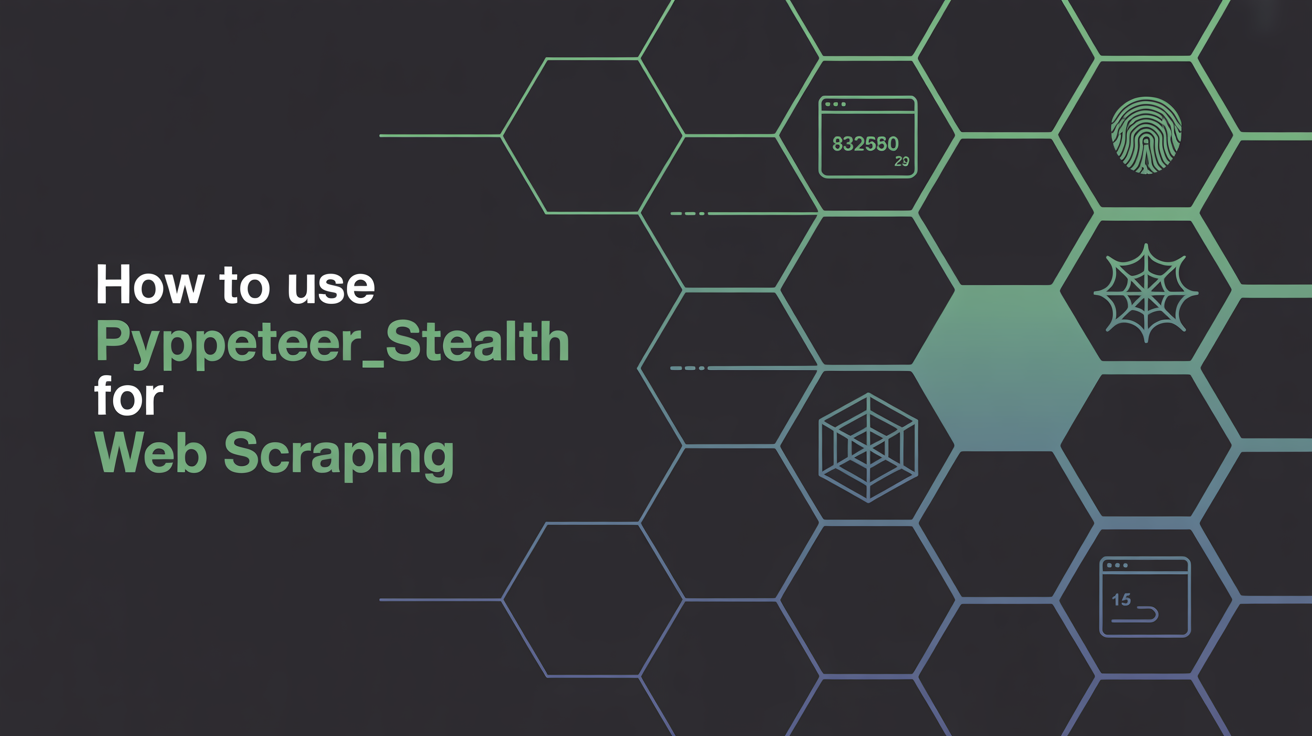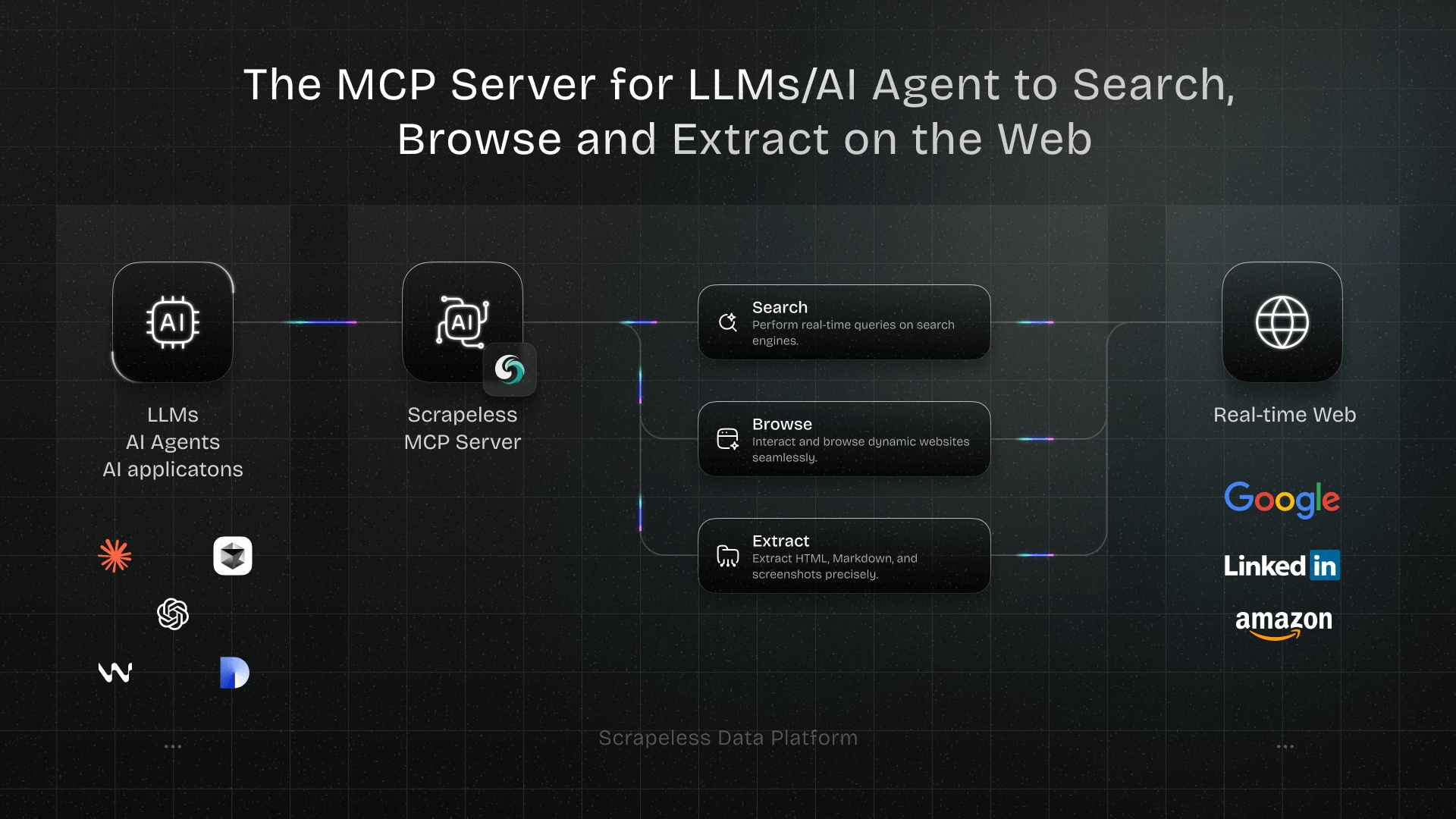How to Use pyppeteer_stealth for Web Scraping
Advanced Data Extraction Specialist
Key Takeaways
- Pyppeteer-stealth is a crucial plugin for masking the most obvious bot signals in Pyppeteer, but it is no longer sufficient against modern anti-bot systems.
- Modern anti-bot defenses, such as Cloudflare's Bot Management, rely on advanced techniques like behavioral analysis and network-level fingerprinting (TLS/HTTP2) that simple JavaScript patches cannot bypass.
- The primary limitation of Pyppeteer-stealth is its static nature, requiring constant manual updates to keep pace with rapidly evolving detection methods.
- The Scrapeless Browser offers a superior, all-in-one alternative by combining dynamic anti-detection, global proxy rotation, and real-time Cloudflare bypassing, eliminating the maintenance burden of self-managed stealth solutions.
The Rise of Pyppeteer-Stealth
Pyppeteer is the Python port of Puppeteer, the popular Node.js library that provides a high-level API to control headless Chrome or Chromium. It quickly became a favorite tool for developers needing to scrape dynamic, JavaScript-heavy websites. However, the default configuration of a headless browser leaves behind a clear digital trail—a "bot signal"—that modern anti-bot systems can easily detect [1].
This is where Pyppeteer-stealth enters the picture. It is a necessary plugin designed to patch known vulnerabilities and inconsistencies in the headless browser environment. The core purpose of Pyppeteer-stealth is to make the automated browser appear as close as possible to a standard, human-driven browser.
How Pyppeteer-Stealth Works
The plugin operates by injecting JavaScript code into the browser context before the target website's scripts can run. This injected code modifies various browser properties and functions that anti-bot systems commonly check to identify automation.
The primary signals that Pyppeteer-stealth targets include:
- User-Agent String: Headless browsers often include the word "Headless" in their user-agent string. The plugin spoofs this to a standard, rotating user-agent string.
navigator.webdriverProperty: This is the most famous signal. By default, this property is set totruein automated browsers. The plugin modifies it to returnundefined, a common value in standard browsers.- WebGL and Plugins: It masks the fact that the browser is running in a virtualized or headless environment by injecting fake data for properties like
navigator.pluginsandnavigator.languages. - Function Signatures: It fixes inconsistencies in the string representations of native browser functions, which can be used as a subtle form of fingerprinting.
By patching these JavaScript-level signals, Pyppeteer-stealth successfully bypasses the most basic forms of bot detection, allowing developers to scrape simple to moderately protected websites.
The Limitations of Pyppeteer-Stealth in 2025
While Pyppeteer-stealth was a revolutionary tool, the anti-bot landscape has evolved significantly. In 2025, relying solely on this plugin for large-scale, reliable data extraction against well-protected targets is a recipe for failure. The limitations stem from the static nature of the patches versus the dynamic, multi-layered approach of modern bot management.
Limitation 1: Static Patches vs. Dynamic Detection
The most critical flaw of Pyppeteer-stealth is its reliance on a fixed set of patches for known bot signals. Anti-bot companies, such as Cloudflare, are constantly updating their detection algorithms, often introducing new, subtle JavaScript checks that the existing, static patches do not cover. This creates a perpetual maintenance burden for the scraper developer, who must wait for the open-source community to identify the new signal, develop a patch, and release an update. This lag time results in significant data collection downtime.
Limitation 2: Network-Level Fingerprinting
Pyppeteer-stealth operates exclusively at the JavaScript level within the browser. However, modern anti-bot systems also analyze network-level fingerprints, which the plugin cannot touch. These include:
- TLS/SSL Fingerprinting (e.g., JA3): This technique analyzes the unique way a client negotiates a secure connection. Headless browsers often use a different TLS client implementation than a standard browser, creating a distinct, detectable signature [2].
- HTTP/2 Frame Ordering: The specific sequence and content of HTTP/2 frames can also reveal automation.
Since these are operating system and network stack characteristics, a JavaScript-based plugin is fundamentally incapable of masking them.
Limitation 3: Behavioral Analysis at Scale
Modern detection is moving beyond static signals to focus on user behavior. Systems use machine learning to analyze mouse movements, scrolling patterns, and typing speed. While a single, manually controlled Pyppeteer instance can simulate human behavior, scaling this to hundreds or thousands of concurrent instances is virtually impossible. Automated scripts, even with Pyppeteer-stealth, exhibit non-human patterns—such as clicking instantly or moving the mouse in straight lines—that sophisticated behavioral models flag immediately.
| Feature | Pyppeteer-Stealth (Self-Managed) | Scrapeless Browser (Managed Solution) |
|---|---|---|
| Anti-Detection Method | Static JavaScript patches for known signals. | Dynamic, multi-layered anti-detection (JS, TLS, Behavioral). |
| Cloudflare Bypass | Low/Inconsistent success; fails against active challenges (Turnstile). | High/Consistent success; built-in, real-time handling for all challenges. |
| Maintenance | High; constant manual updates required for patches and proxy rotation. | Zero; fully managed and automatically updated by the provider. |
| Scalability | Limited; constrained by local infrastructure and manual proxy management. | Unlimited Concurrency; auto-scaling with global edge nodes. |
| Cost Model | Engineering time + infrastructure cost + proxy cost. | Transparent, usage-based cost; eliminates engineering overhead. |
The Best Alternative: Scrapeless Browser
For businesses that require reliable, high-volume data extraction in the face of 2025's advanced anti-bot defenses, the solution is to move from self-managed, patched open-source tools to a dedicated, managed anti-detection platform. The Scrapeless Browser is designed as the definitive alternative to the limitations of Pyppeteer-stealth.
The Scrapeless Browser is a fully managed, cloud-based headless browser environment that integrates all necessary anti-detection and proxy infrastructure into a single, seamless service. It is natively compatible with Pyppeteer, Puppeteer, and Playwright via a simple CDP connection, allowing for project migration with minimal code changes.
Case Study: Bypassing Cloudflare Challenges with Scrapeless
Cloudflare is one of the most formidable anti-bot systems, relying on both passive (network-level fingerprinting) and active (CAPTCHA, JavaScript challenges) detection. Bypassing it consistently is the ultimate test of any scraping solution.
The Scrapeless Browser achieves consistent Cloudflare bypass through a three-pronged strategy:
- High-Fidelity Fingerprinting: Unlike Pyppeteer-stealth which only patches JavaScript, Scrapeless ensures that the entire browser environment—including the TLS/SSL handshake and HTTP/2 frame ordering—presents a genuine, non-automated signature. This passes the passive, network-level checks that immediately block most self-managed scrapers [3].
- Smart Anti-Detection for Active Challenges: When an active challenge, such as a Cloudflare Turnstile or a JavaScript challenge page, is served, the Scrapeless Browser's built-in Smart Anti-Detection system handles it in real-time. This includes automatically solving the challenge without human intervention, ensuring the scraping process continues uninterrupted. The platform's ability to handle these challenges is a core feature [4].
- Global IP Rotation: Cloudflare uses IP reputation to flag suspicious traffic. Scrapeless provides access to a massive pool of clean, high-reputation Global IP Resources (Residential, Static ISP) across 195 countries. By rotating these IPs, Scrapeless ensures that every request appears to come from a unique, legitimate user, bypassing any IP-based rate limiting or bans.
This integrated approach eliminates the need for developers to constantly monitor anti-bot updates, manage complex proxy infrastructure, or troubleshoot failed stealth patches.
Recommended reading: How to Bypass Cloudflare Protection and Turnstile Using Scrapeless | Complete Guide
Conclusion
The era of relying on simple, static patches like Pyppeteer-stealth to maintain reliable data streams is over. The sophistication of modern anti-bot technology demands a dynamic, comprehensive solution that addresses detection at every layer—from the network stack to the behavioral patterns.
The Scrapeless Browser is the necessary evolution for any serious data operation. It replaces the high-maintenance, low-reliability model of self-managed stealth with a robust, scalable, and fully managed anti-detection platform. By adopting Scrapeless, organizations can shift their focus from fighting anti-bot wars to leveraging the valuable data they need to drive their business forward.
Ready to Eliminate Stealth Maintenance?
Stop wasting engineering time on Pyppeteer patches and Cloudflare troubleshooting. Experience the power of zero-maintenance, high-reliability web scraping.
Start Your Free Trial with Scrapeless Today
Frequently Asked Questions (FAQ)
Q1: What is the difference between Pyppeteer and Puppeteer?
A: Puppeteer is the official Node.js library for controlling headless Chrome. Pyppeteer is the unofficial, community-maintained Python port of the Puppeteer API. They share the same core functionality, but Pyppeteer allows Python developers to work with the headless browser without leaving their preferred language environment.
Q2: Why is Cloudflare so hard to bypass?
A: Cloudflare is difficult to bypass because it employs a multi-layered detection strategy. It combines passive checks (TLS/HTTP2 fingerprinting, IP reputation) with active checks (JavaScript challenges, CAPTCHAs like Turnstile). A scraper must pass all these checks simultaneously to gain access, which is nearly impossible with basic tools.
Q3: Does Pyppeteer-stealth hide my IP address?
A: No, Pyppeteer-stealth only modifies JavaScript properties within the browser to mask bot signals. It does not handle network routing or IP addresses. Hiding your IP requires integrating a separate proxy solution, which adds another layer of complexity to a self-managed setup.
Q4: What is a browser fingerprint?
A: A browser fingerprint is a unique identifier created by collecting information about a user's browser, operating system, hardware, and settings (e.g., screen resolution, installed fonts, WebGL capabilities). Anti-bot systems use this fingerprint to track and identify repeat visitors and automated bots, even if they change their IP address.
Useful Links
- Scraping Browser: Learn more about the core technology that defeats anti-bot systems. https://www.scrapeless.com/en/product/scraping-browser
- Proxies: Explore our global IP resources for reliable, geo-targeted data collection. https://www.scrapeless.com/en/product/proxies
- Captcha Solver: See how we automatically handle Cloudflare Turnstile and reCAPTCHA. https://www.scrapeless.com/en/product/captcha-solver
- Market Research: Discover how uninterrupted data streams drive competitive market analysis. https://www.scrapeless.com/en/solutions/market-research
- SEO Data: Understand the role of reliable scraping in search engine optimization. https://www.scrapeless.com/en/solutions/seo
At Scrapeless, we only access publicly available data while strictly complying with applicable laws, regulations, and website privacy policies. The content in this blog is for demonstration purposes only and does not involve any illegal or infringing activities. We make no guarantees and disclaim all liability for the use of information from this blog or third-party links. Before engaging in any scraping activities, consult your legal advisor and review the target website's terms of service or obtain the necessary permissions.



